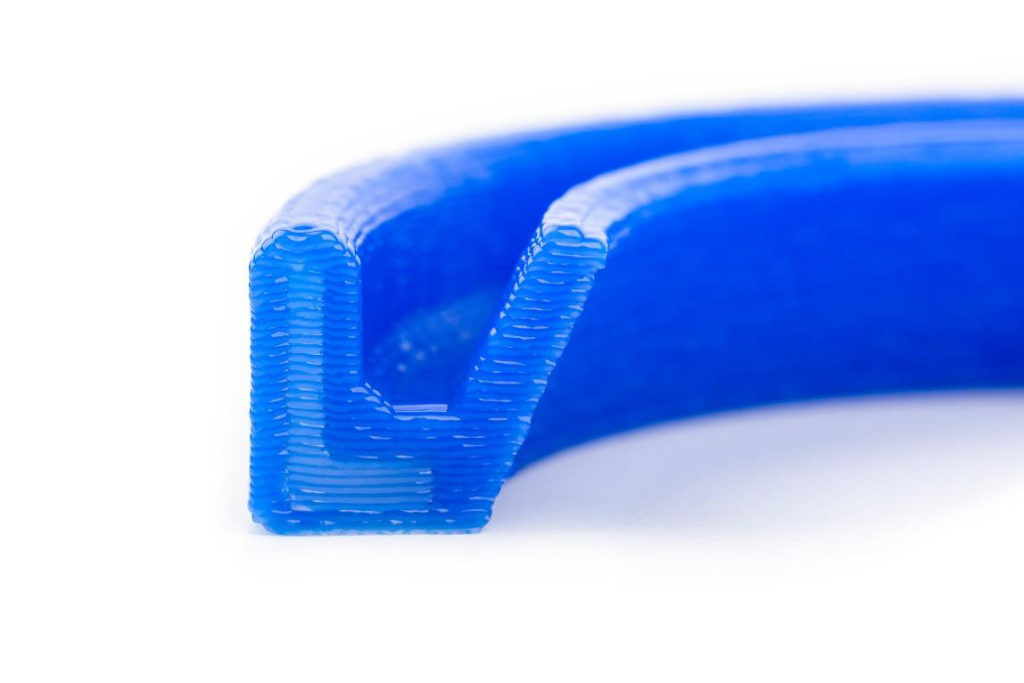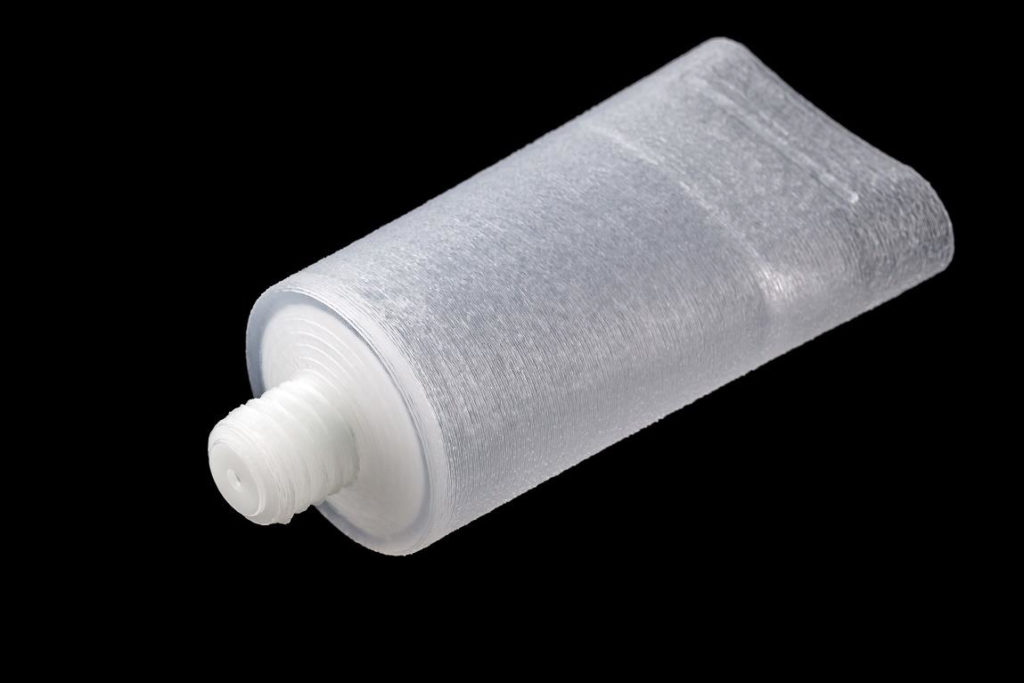Applying WACKER’s expertise in silicone to the world of 3D printing, ACEO was launched in 2017 with one of the few 3D printing services specialized in producing elastomeric parts. Now, the subsidiary of the chemical giant has expanded its technology to combine both soft silicone and hard materials in a single print.
With ACEO’s industrial 3D printers, it’s possible to 3D print up to four materials, including support. The company offers a variety of silicones with a range of properties, including differences in shore hardness, UV resistance, thermal stability, and sterilizability. In 2018, electrically conductive silicone was added to its multi-material 3D printing portfolio to enable flexible sensors and other applications.
By partnering with DELO Industrial Adhesives, ACEO is now offering an epoxy thermoset material that makes it possible to combine soft silicone and hard epoxy materials. The materials do not adhere together, meaning that it is necessary to mechanically fix the two substances together for part integrity. However, it also means that the materials can be easily separated after use. DELO was in 3D printing news recently through a partnership with Infotech, which has launched its own line of 3D printers using DELO materials.
ACEO suggests that “silicone applications can be made stronger by adding epoxy reinforcements or protective sections, and designers can add functionality by adding tough connector parts.” For epoxy-focused developers, “engineers can now make hard products safer by designing soft interfaces, they can provide flexibility by adding hinges or dampening by adding spring elements and so on.” ACEO highlights the fact that, by combining multiple materials into a single print, production can be simplified, as complex assembly operations can be avoided.

Seal ring with silicone on the outside (blue) and epoxy on the inside (L-structure). (Image courtesy of WACKER)
As discussed elsewhere, silicone 3D printing severely underrepresented in the industry, with ACEO representing the largest provider of silicone 3D printing. Instead, those interested in 3D printing flexible parts typically must rely on inkjetting, powder bed fusion, vat photopolymerization or material extrusion of an elastomeric, but non-silicone material. This may be acceptable for form and fit prototyping, but materials such as thermoplastic polyurethane do not offer the same chemical resistance, temperature stability, and resistance to ultraviolet light as silicones. In turn, they may not be suitable for the same applications, such as the production of sterilizable medical parts.
ACEO continues to expand its offerings through its 3D printing service, but one wonders when the next big leap in silicones will occur. Perhaps Spectroplast will become the leading competition to ACEO, but it doesn’t have the same heavy backing as ACEO does with WACKER. There may not be enough interest in 3D printing silicones at the moment to really expand the market, but maybe it will take the sale of industrial silicone 3D printers to really drive this small segment forward.
Subscribe to Our Email Newsletter
Stay up-to-date on all the latest news from the 3D printing industry and receive information and offers from third party vendors.
You May Also Like
Profiling a Construction 3D Printing Pioneer: US Army Corps of Engineers’ Megan Kreiger
The world of construction 3D printing is still so new that the true experts can probably be counted on two hands. Among them is Megan Kreiger, Portfolio Manager of Additive...
US Army Corps of Engineers Taps Lincoln Electric & Eaton for Largest 3D Printed US Civil Works Part
The Soo Locks sit on the US-Canadian border, enabling maritime travel between Lake Superior and Lake Huron, from which ships can reach the rest of the Great Lakes. Crafts carrying...
Construction 3D Printing CEO Reflects on Being Female in Construction
Natalie Wadley, CEO of ChangeMaker3D, could hear the words of her daughter sitting next to her resounding in her head. “Mum, MUM, you’ve won!” Wadley had just won the prestigious...
1Print to Commercialize 3D Printed Coastal Resilience Solutions
1Print, a company that specializes in deploying additive construction (AC) for infrastructure projects, has entered an agreement with the University of Miami (UM) to accelerate commercialization of the SEAHIVE shoreline...






























